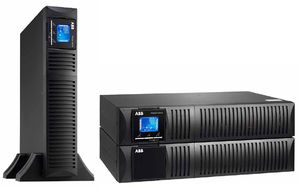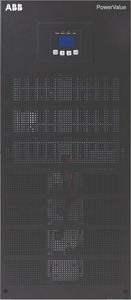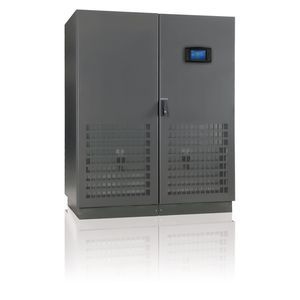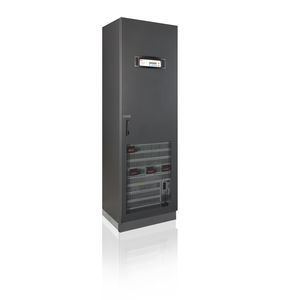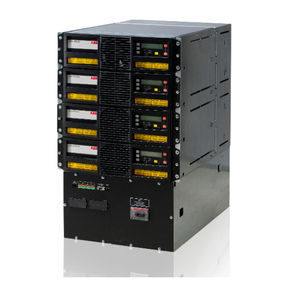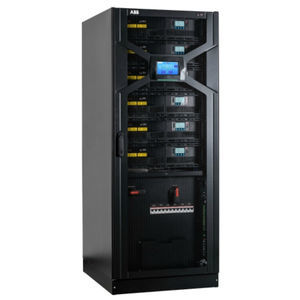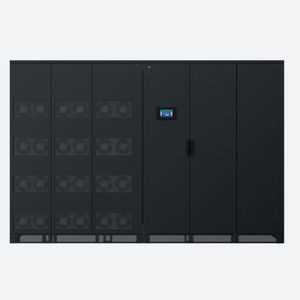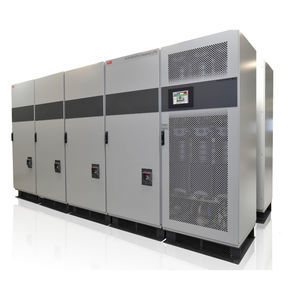
- Electricity - Electronics
- Power Supply
- Double-conversion UPS
- ABB UPS and power conditioning products
Double-conversion UPS Conceptpower DPA parallelthree-phasedata center

Add to favorites
Compare this product
Characteristics
- Type
- double-conversion, parallel
- Electrical characteristics
- three-phase
- Applications
- data center, network
- Other characteristics
- with LCD display, Eco mode, modular, rack-mount, high-density, high-power, IEC, ISO
- Output power kVA
Max.: 1,500 kVA
(2,039.4317 hp)Min.: 30 kVA
(40.7886 hp)150 kVA, 250 kVA
(203.9432 hp, 339.9053 hp)- Input voltage
Max.: 460 V
Min.: 161 V
- Output voltage
Max.: 415 V
Min.: 220 V
- Power
Max.: 1,500,000 W
Min.: 30,000 W
Description
In today’s digital world, the increased power protection requirements of last generation’s data centres can be fulfilled with the Conceptpower DPA™, the energy-efficient three-phase modular UPS.
Online Swap Modularity (OSM)
Output power factor range 0.8 lag to 0.9 lead supported without de-rating
Best-in-class compactness (250 kVA = 0.58 m2, 342.5 kW/m2)
Input power factor PF = 0.99
Ripple-free battery charging increases battery life
Wide input voltage range (–20%/+15%) at full load
The Conceptpower DPA is a high-power, modular UPS system designed for today’s critical high-density computing environments. The UPS is built using true online double conversion technology and delivers high quality power. When combined with complete network integration software and communication connectivity, the Conceptpower DPA provides a comprehensive, easy-to-integrate power protection for data centers and network environments.
Exhibitions
Meet this supplier at the following exhibition(s):

Other ABB UPS and power conditioning products products
UPS SYSTEMS
Related Searches
- On-line uninterruptible power supply
- AC uninterruptible power supply
- Industrial uninterruptible power supply
- Three-phase uninterruptible power supply
- Single-phase UPS
- UPS with LCD display
- Data center uninterruptible power supply
- Eco mode uninterruptible power supply
- IEC uninterruptible power supply
- Compact uninterruptible power supply
- Parallel uninterruptible power supply
- Network uninterruptible power supply
- Double-conversion UPS
- DC uninterruptible power supply
- Modular uninterruptible power supply
- Medical uninterruptible power supply
- Lead UPS
- UPS for telecom applications
- Pure sine wave UPS
- CE uninterruptible power supply
*Prices are pre-tax. They exclude delivery charges and customs duties and do not include additional charges for installation or activation options. Prices are indicative only and may vary by country, with changes to the cost of raw materials and exchange rates.







